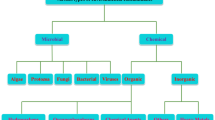Abstract
Contamination of groundwater, soil, and the marine environment by explosives is a global issue. Identification, characterization and remediation are all required for a site recognized as contaminated with 2,4,6-trinitrotoluene (TNT) or hexahydro-1,3,5-trinitro-1,3,5-triazine (RDX). For each step, a method to accurately measure the contaminant level is needed. This paper reviews some of the current methods with emphasis on a single biosensor developed in our laboratory. Current regulatory methods require samples to be sent off-site to a certified laboratory resulting in time delays up to a month. A continuous flow biosensor for detection of explosives has been developed and tested for the rapid field screening of environmental samples. The detection system is based on a displacement immunoassay in which monoclonal antibodies to (TNT) and RDX are immobilized on solid substrates, allowed to bind fluorescently labeled antigens, and then exposed to explosives in aqueous samples. Explosive compounds present in the sample displace proportional amounts of the fluorescent label, which can then be measured to determine the original TNT or RDX concentration. The system can accurately detect ppb to ppt levels of explosives in groundwater or seawater samples and in extracts of contaminated soil. The biosensor has applications in environmental monitoring at remediation sites or in the location of underwater unexploded ordnance.



Similar content being viewed by others
References
EPA (1995) US Environmental Protection Agency, Washington, DC
Jenkins TF, Schumacher PW, Mason JG, Thorne PG (1996) Cold Regions Research and Engineering Laboratory 96–10 Hanover, NH
Weisberg CA, Ellickson ML (1998) Am Lab, February, 32N–32V
Woltman SJ, Even WR, Sahlin E, Weber SG (2000) Anal Chem 72:4928–4933
Hilmi A, Luong JHT, Nguyen A-L (1999) Anal Chem 71:873–878
Wallenborg SR, Bailey CG (2000) Anal Chem 72:1872–1878
Hilmi A, Luong JHT (2000) Environ Sci Technol 34:3046–3050
Lu Q, Collins GE, Smith M, Wang J (2002) Anal Chim Acta 469:253–260
Crockett AB, Jenkins TF, Craig HD, Sisk WE (1998) CRREL Special Reports 98–4 Hanover, NH
Crockett AB, Craig HD, Jenkins TF (1999) Federal Facilities Forum, Washington, DC, US Environmental Protection Agency
Craig H, Ferguson G, Markos A, Kusterbeck A, Shriver-Lake L, Jenkins T, Thorne P (1996) Great Plains-Rocky Mountain Hazardous Substance Research Center/Waste Education and Research Consortium, Joint Conference on the Environment, Albuquerque, NM, pp 204–219
Echols RT, Christensen MM, Krisko RM, Joseph H, Aldstadt I (1999) Anal Chem 71:2739–2744
Thorne P, Myers KF (1997) Cold Regions Research and Engineering Laboratory 97–32 Hanover, NH
Jenkins T, Miyares PH, Myers KF, McCormick EF, Strong AB (1994) Anal Chim Acta 289:69–78
Green TM, Charles PT, Anderson GP (2002) Anal Biochem 310:36–41
Bakaltcheva IB, Shriver-Lake LC, Ligler FS (1998) Sens Actuators B 51:46–51
Bakaltcheva IB, Ligler FS, Patterson CH, Shriver-Lake LC (1999) Anal Chim Acta 399:13–20
Shriver-Lake LC, Donner BL, Ligler FS (1997) Environ Sci Technol 31:837–841
Shriver-Lake LC, Patterson CH, van Bergen SK (2000) Field Anal Chem Technol 4:239–245
Van Bergen SK, Bakaltcheva IB, Lundgren JS, Shriver-Lake LC (2000) Environ Sci Technol 34:704–708
Rabbany SY, Marganski WA, Kusterbeck AW, Ligler FS (1998) Biosens Bioelectron 13:939–944
Whelan JP, Kusterbeck AW, Wemhoff GA, Bredehorst R, Ligler FS (1993) Anal Chem 65:3561–3565
Kusterbeck AW, Charles P, Patterson CH, Gauger PR (2000) In: Current protocols in field analytical chemistry. Wiley
Bart JC, Judd LL, Kusterbeck AW (1997) Sens Actuators B 39:411–418
Charles PT, Gauger PR, Patterson CH, Kusterbeck AW (2000) Environ Sci Technol 34:4641–4650
Charles PT, Kusterbeck AW (1999) Biosens Bioelectron 14:387–396
Narang U, Gauger PR, Ligler FS (1997) Anal Chem 69:2779–2785
Narang U, Gauger PR, Ligler FS (1997) Anal Chem 69:1961–1964
Narang U, Gauger PR, Kusterbeck AW, Ligler FS (1998) Anal Biochem 255:13–19
Gauger PR, Holt DB, Patterson CH, Charles PT, Shriver-Lake L, Kusterbeck AW (2001) J Hazard Mater 83:51–63
Kusterbeck AW, Charles PT (1998) Field Anal Chem Technol 2:341–350
Bart JC, Judd LL, Hoffman KE, Wilkins AM, Kusterbeck AW (1997) Environ Sci Technol 31:1505–1511
Bart JC, Judd LL, Hoffman KE, Wilkins AM, Charles PT, Kusterbeck AW (1997) In: Aga DS, Thurman EM (eds) Immunochemical technology for environmental applications, American Chemical Society, pp 210–220
Judd L, Kusterbeck AW, Charles PT, Ligler FS, Foster KE (1993) Field screening methods for hazardous wastes and toxic chemicals, vol 2, Air and Waste Management Association, Pittsburg, PA
Shriver-Lake LC, Kusterbeck AW, Charles PT, Patterson Jr CH, Holt D, Gauger PR (2001) Naval Research Laboratory, NRL/FR/6900--01–9980, Washington, DC
Charles PT, Dingle BM, van Bergen S, Gauger PR, Patterson Jr CH, Kusterbeck AW (2001) Field Anal Chem Technol 5:272–280
Acknowledgements
This work was funded by Strategic Environmental Research and Development Program (SERDP) and Environmental Security Technology Certification Program (ESTCP). The views expressed here are those of the authors and do not represent those of the US Navy, US Department of Defense or the US Government.
Author information
Authors and Affiliations
Corresponding author
Rights and permissions
About this article
Cite this article
Shriver-Lake, L.C., Charles, P.T. & Kusterbeck, A.W. Non-aerosol detection of explosives with a continuous flow immunosensor. Anal Bioanal Chem 377, 550–555 (2003). https://doi.org/10.1007/s00216-003-2130-8
Received:
Revised:
Accepted:
Published:
Issue Date:
DOI: https://doi.org/10.1007/s00216-003-2130-8




